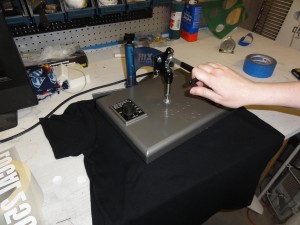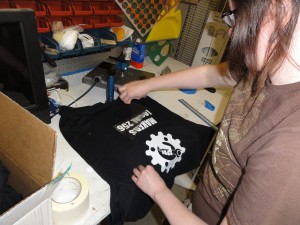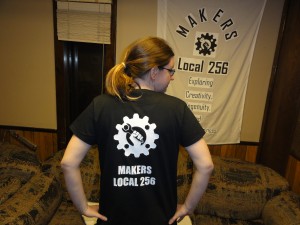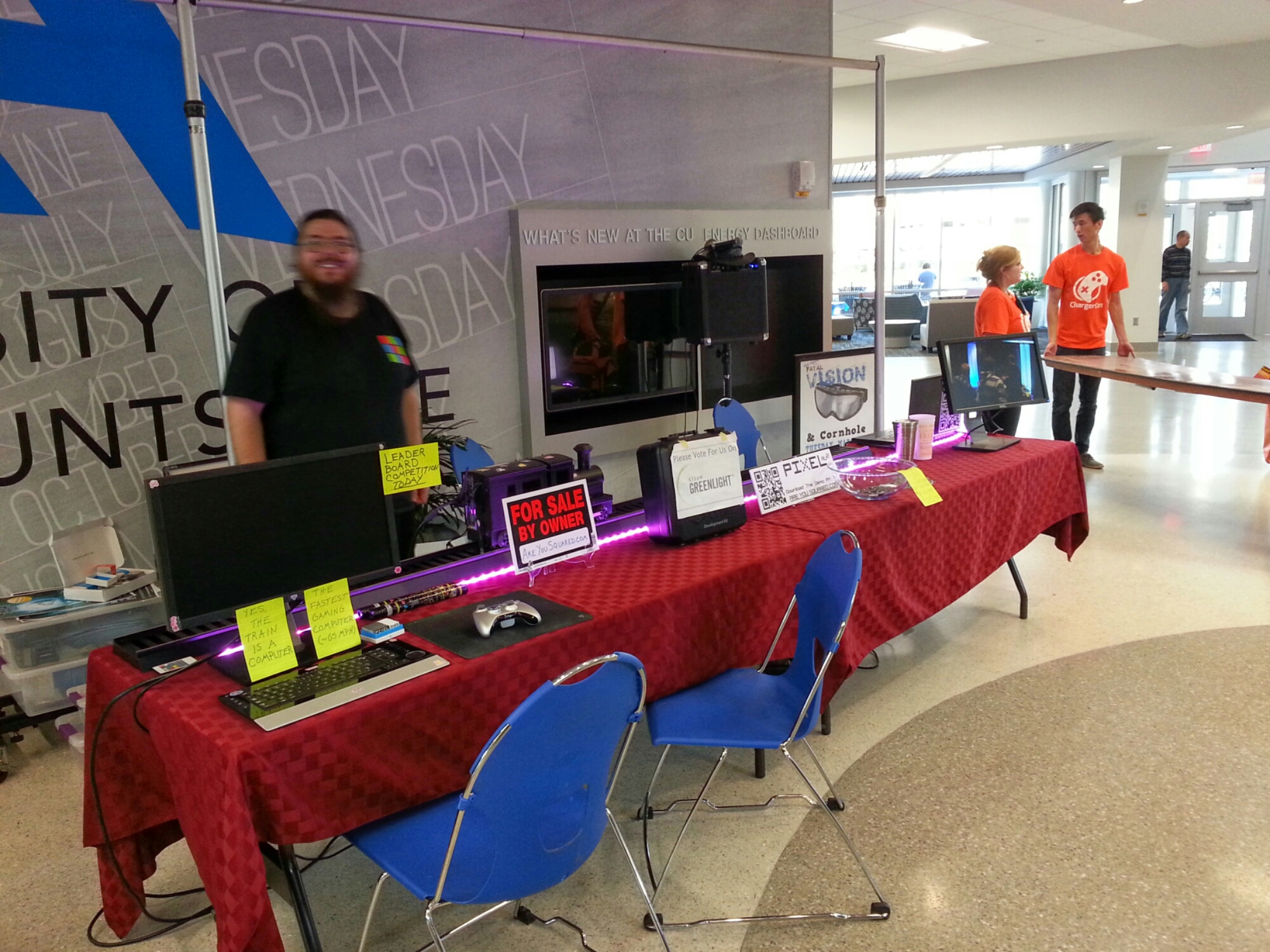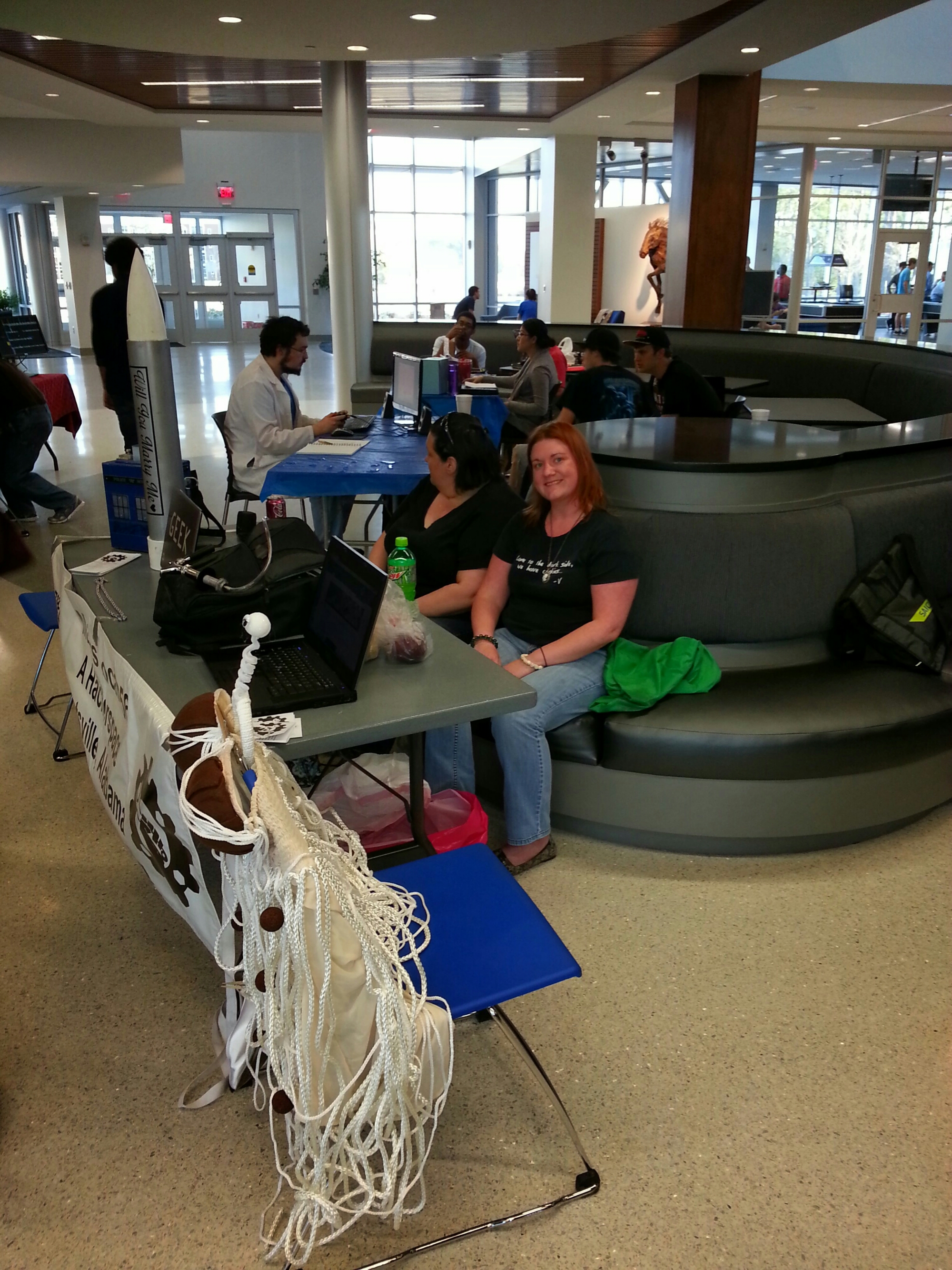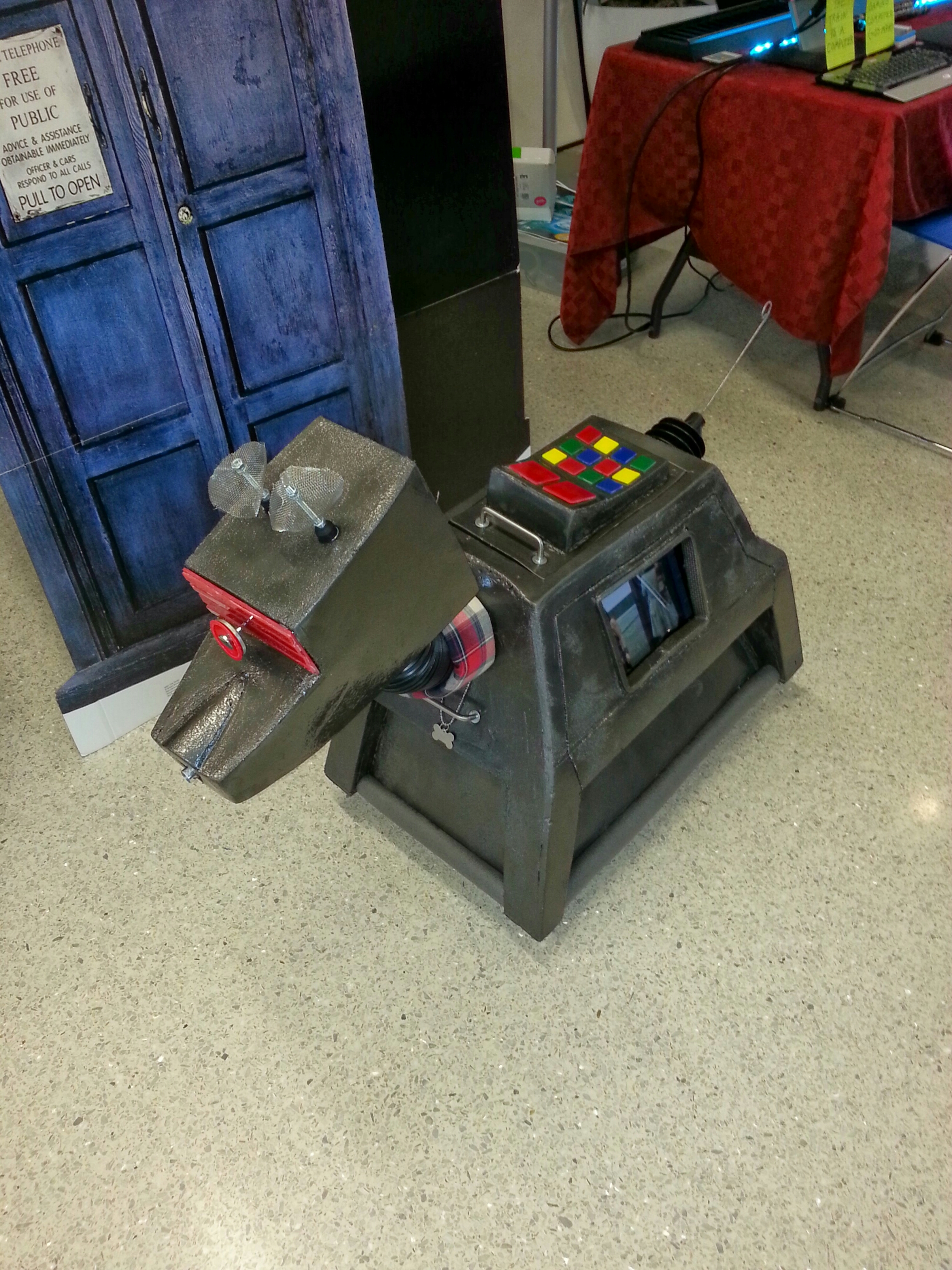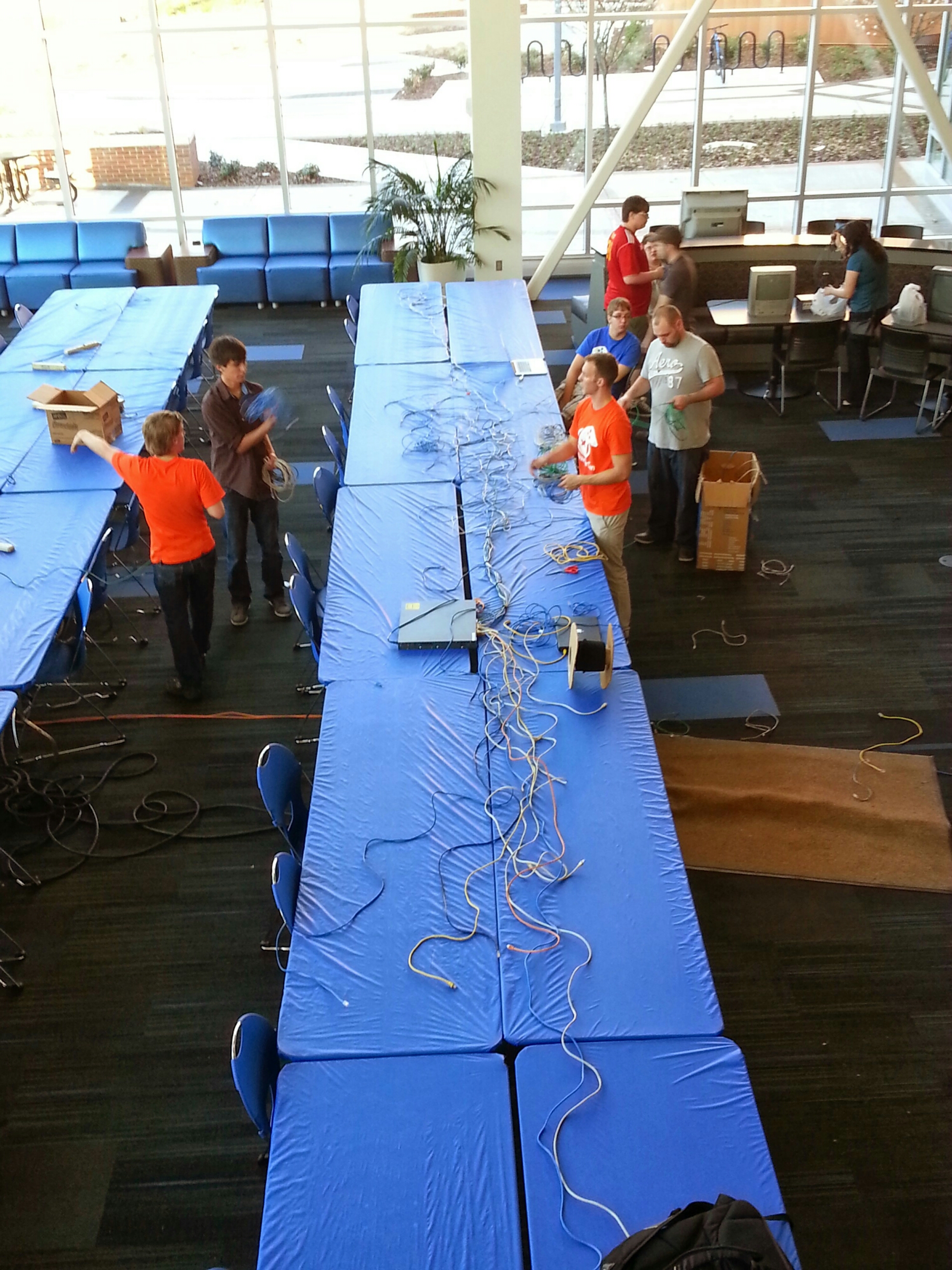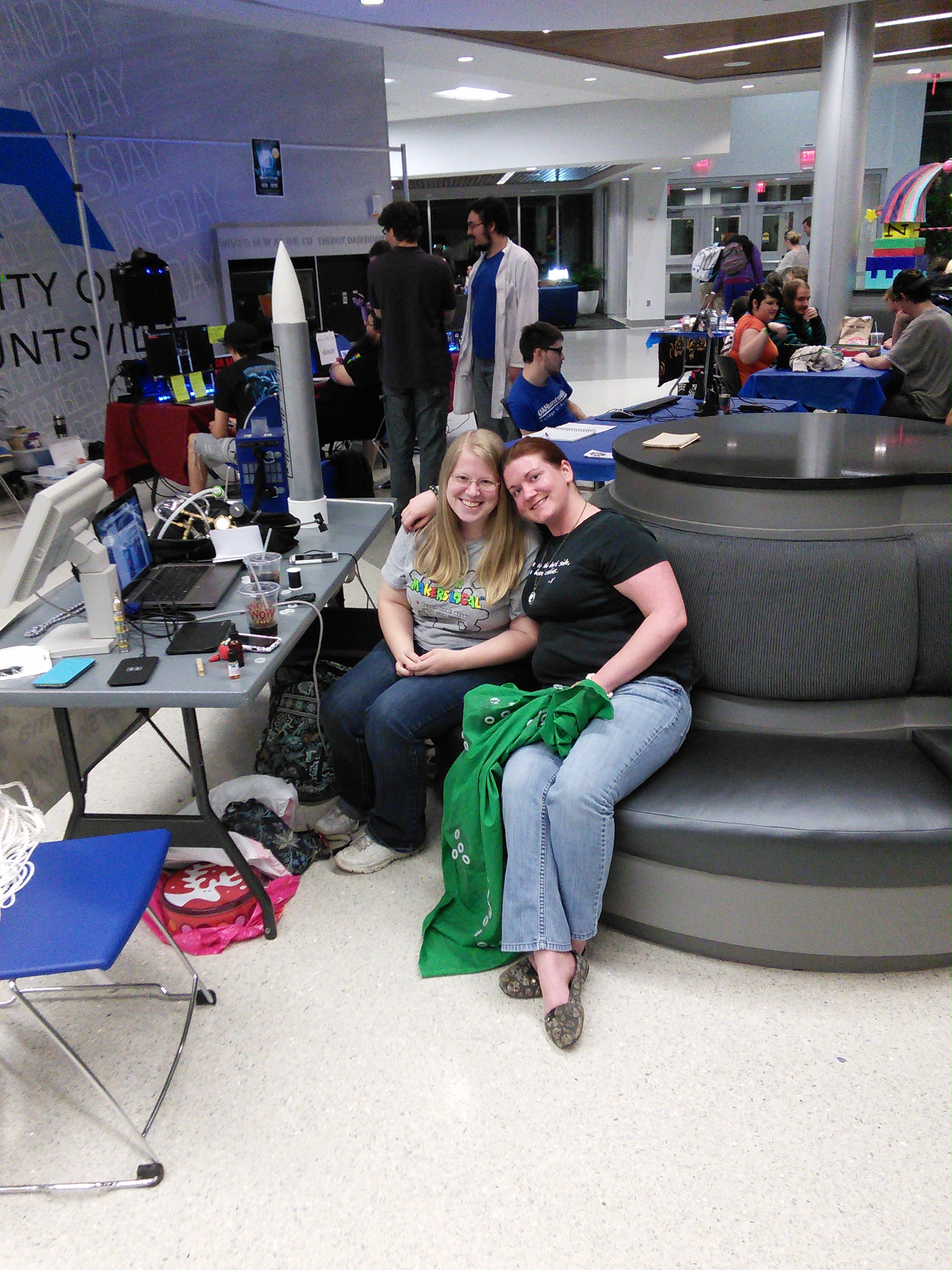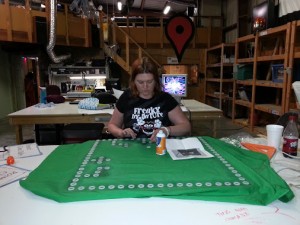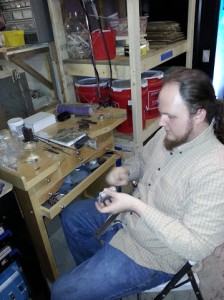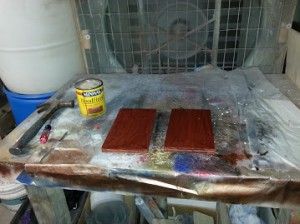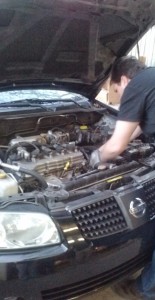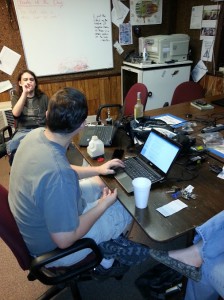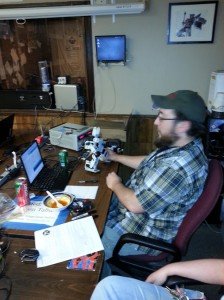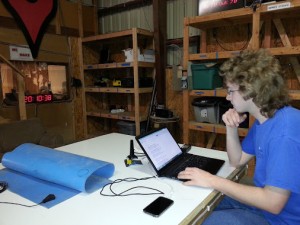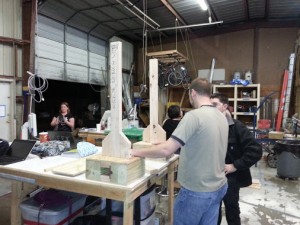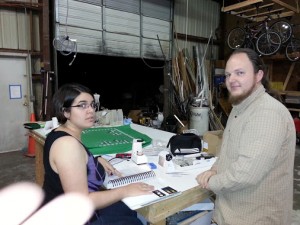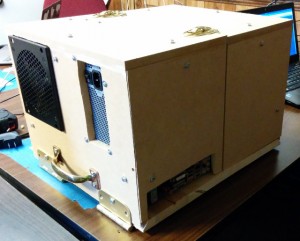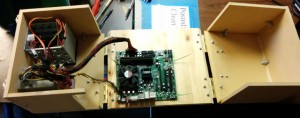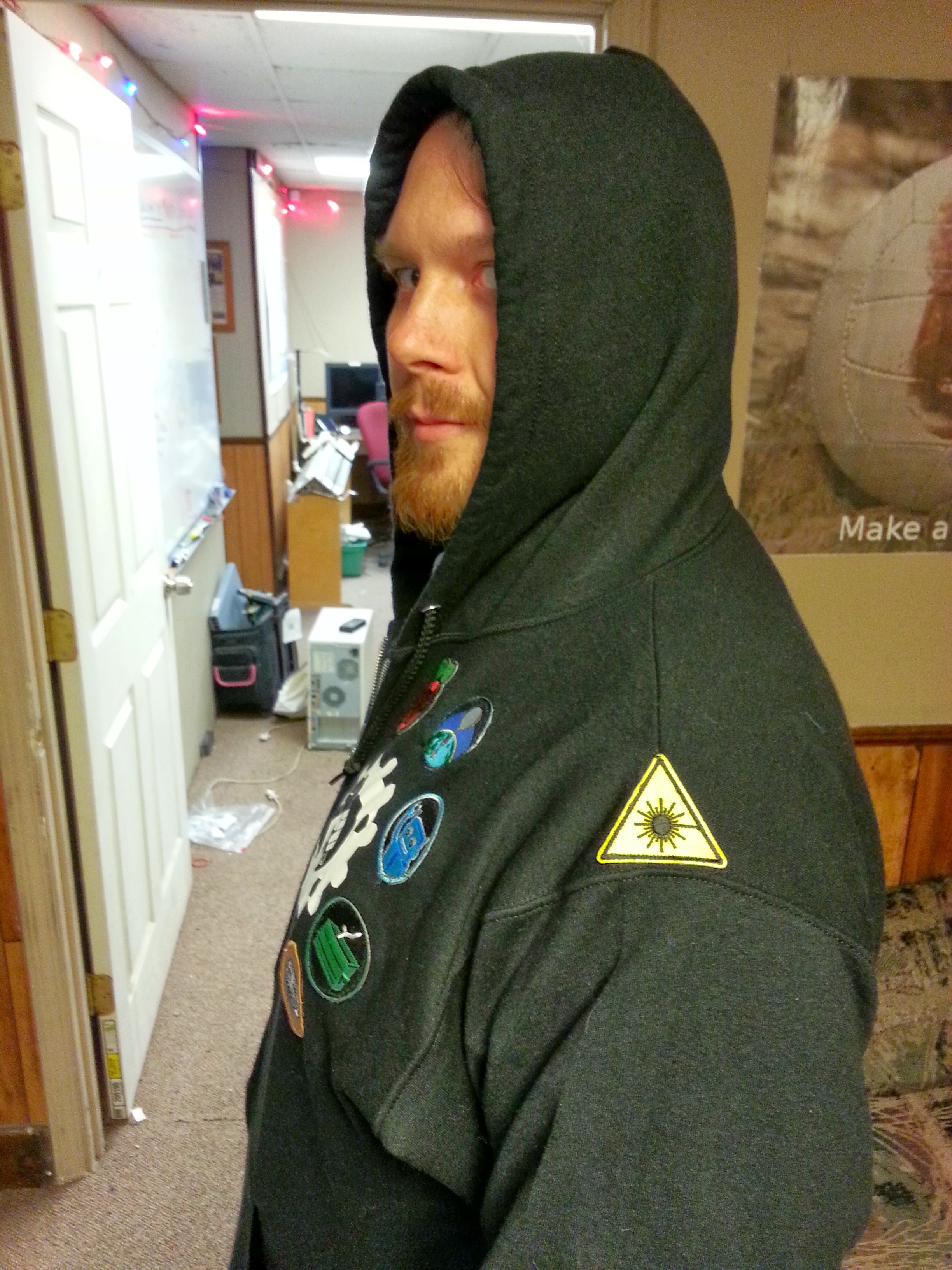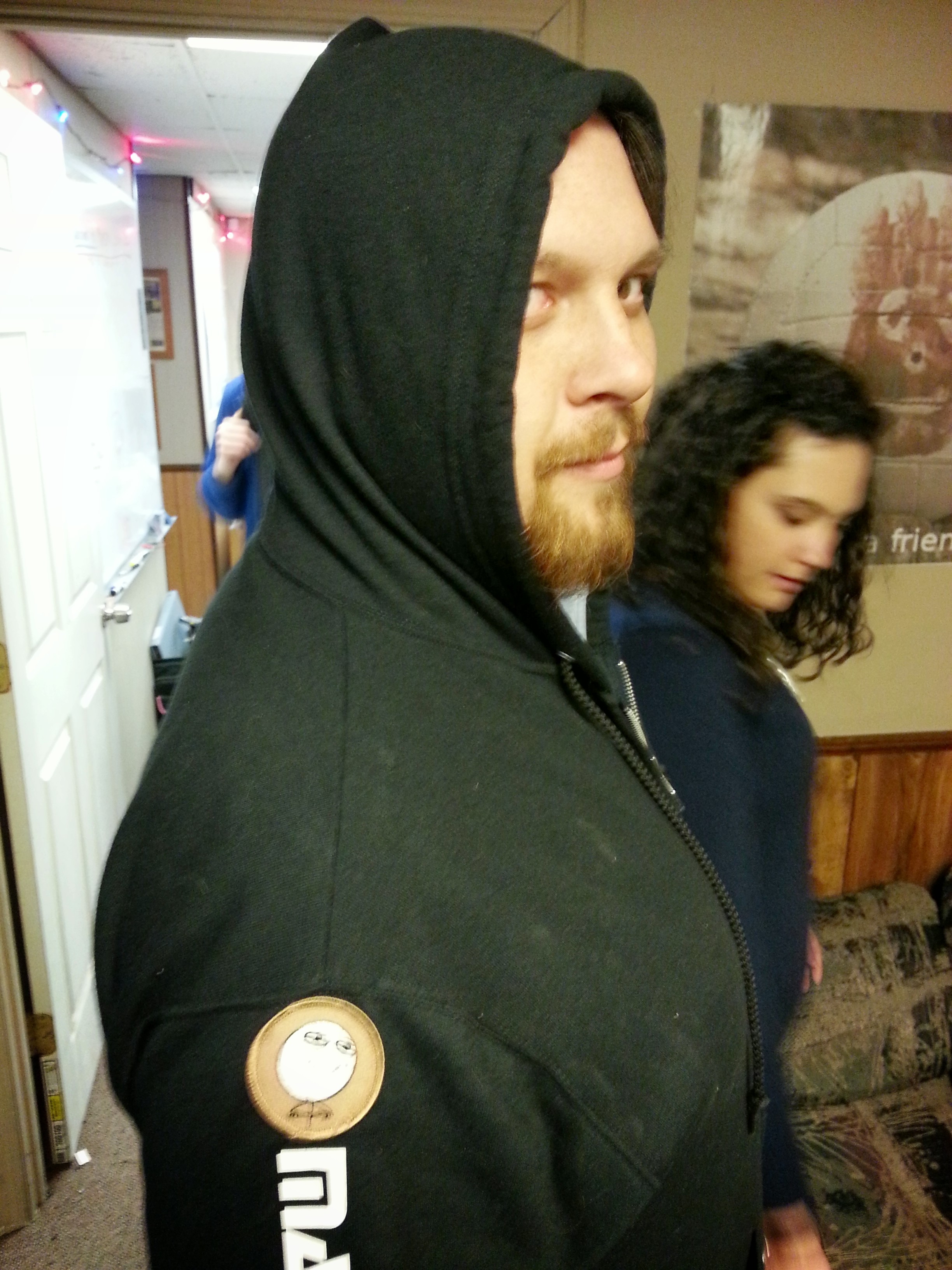New Heat Press at Makers Local 256
Last week, we got a new heat press set up in the crafting area of the shop. It’s a Hix Hobby Lite 9″ x 12″. Wolfenhex and I decided to inaugurate it by making a Makers Local 256 shirt.
The shirt we selected was a Gildan 100% cotton, and we used Thermoflex Plus white t-shirt vinyl. The design was cut from a vector graphic using the shops vinyl cutter.
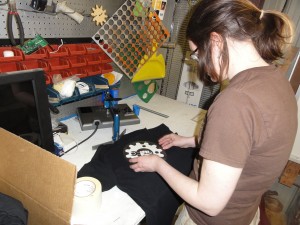
After the vinyl cutter did it’s thing, we weeded the design with the help of some sharp tweezers, and then positioned it on the shirt. The vinyl’s backing is sticky and will help hold it in place. It’s a good idea to press the shirt with the hot press for about four seconds prior to placing the vinyl, to flatten out the surface and remove moisture.
Once the vinyl is correctly positioned (we put it below the shirt’s neckline to avoid any wrinkles from that), set a timer and lock the press down. Temperature, pressure, and duration will vary by vinyl type, so look up the manufacturer’s recommendation. This vinyl said to press it at medium pressure (there’s a valve for adjusting this on the heat press) and 330F for 17-20 seconds. We found that it did better at 20 seconds.
Once it’s finished, peel off the backing while holding the shirt flat (if you can — this is the hardest part because of how hot the shirt and press will be). Whether you peel it off hot or cold will vary by vinyl type, and peeling off at the wrong time could result in wrinkled vinyl or it not sticking.
This hot-peel vinyl did a fantastic job of bonding to the fabric almost seamlessly.
Here’s the finished product! We only did one side this time. If you want to add vinyl to both sides of the shirt, it’s a good idea to put down some parchment paper on the press so that the existing vinyl doesn’t try to stick to it.
Feel free to make your own shirts like this with the vinyl cutter and heat press. The shop may also have other uses for it, such as working on PCBs.
There’s also a wiki page for the heat press.
Who wants some shop-made shirts like this at the next event? We can make it happen now!

